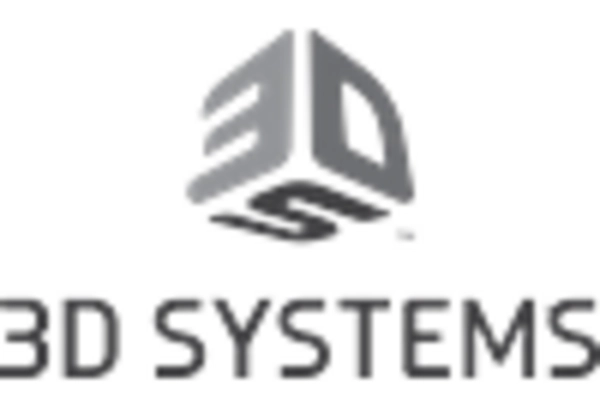The Digital 3D Printing Market has experienced significant evolution over recent years, driven by advancements in technology, material science, and manufacturing processes. As a versatile platform, digital 3D printing caters to numerous applications across diverse industries, including aerospace, automotive, healthcare, and consumer goods. The competitive landscape is characterized by a mix of established corporations and emerging startups, all vying for market share by leveraging innovative technologies and developing unique value propositions.
Competitive insights reveal that the market is increasingly influenced by factors such as streamlined design processes, customization capabilities, and cost-saving manufacturing solutions, along with a growing emphasis on sustainability and reduced waste.
The race to improve printing speed, material longevity, and application versatility has intensified, compelling companies to continually innovate and adapt their offerings. GE Additive holds a prominent position in the Digital 3D Printing Market thanks to its robust portfolio of additive manufacturing solutions and strategic investments in advanced technologies. The company is recognized for its commitment to innovation, which has enabled it to provide high-quality, industrial-grade 3D printing systems and materials tailored to meet the specific needs of various industries.
GE Additive's strengths lie in its extensive research and development capabilities, which facilitate the refinement of production processes and the introduction of cutting-edge materials, ensuring that customers benefit from reliable and efficient solutions. Moreover, GE Additive takes advantage of its vast network in the aerospace and healthcare sectors, where it leverages its expertise to develop applications that enhance performance and reduce production costs. By delivering comprehensive support services, including training and material development, GE Additive solidifies its presence as a key player in the competitive landscape of digital 3D printing.
Voxeljet is another noteworthy entity within the Digital 3D Printing Market, setting itself apart with its proprietary binder jetting technology that caters particularly to the production of large-scale 3D printed components.
The company is known for its high-speed printing capabilities and its ability to create complex geometries, allowing it to address the needs of industries such as automotive, aerospace, and art production. Voxeljet's strengths include its ability to provide customized solutions that empower clients to innovate in their respective fields while benefiting from reduced lead times and minimized waste. With a focus on both industrial and foundry applications, Voxeljet has established a strong market presence and continues to expand its offerings in the realm of additive manufacturing.
The commitment to continuous improvement and investment in research and development enables Voxeljet to maintain competitiveness and cater to the evolving demands of the digital 3D printing ecosystem.


















Leave a Comment